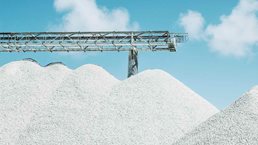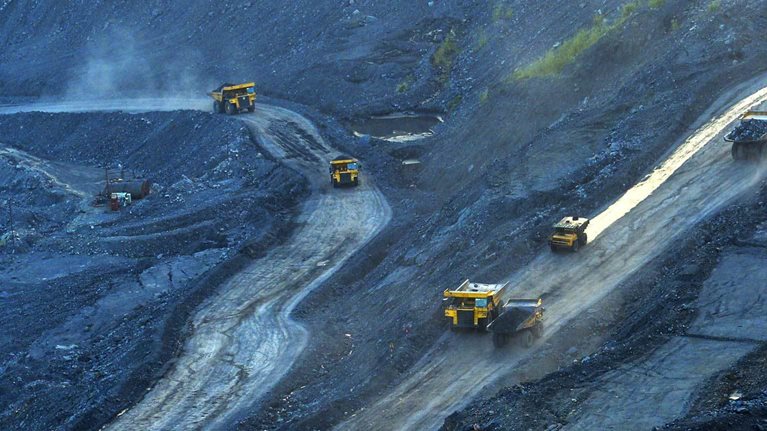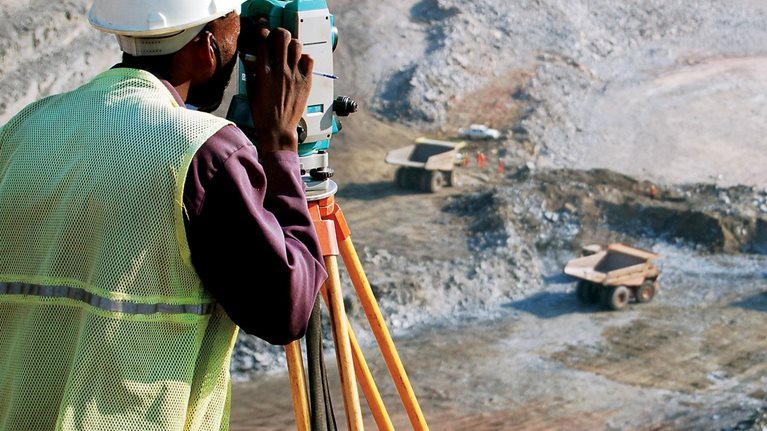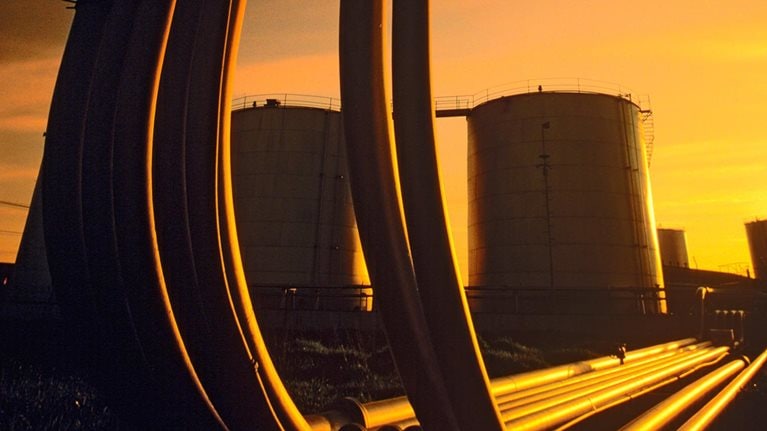Where is the mining industry headed? Commodity prices are now far below their 2011 peaks—metallurgical coal by more than 70 percent, seaborne iron ore by more than 65 percent, and copper and gold by more than 30 percent—and the mining industry’s stock-market valuation has followed prices down. The big mining houses have been working hard on cutting costs, reducing capital expenditures, and boosting productivity. Still, the specter of a return to the bleak pre-China-boom period of sustained low profitability hangs over the industry.
Amidst this gloom, there is an alternative reading of the industry’s mid- to long-term prospects. Our commodity-by-commodity modeling suggests that stock-market sentiment may have overshot—once again. In many commodities, declining ore quality and limited accessibility of new deposits will squeeze supply in coming years, potentially driving a commodity-price rebound as global demand continues to rise. If lessons of previous cycles hold, mining equity prices could be expected to spike as well.
Such an outlook provides a moment of real opportunity. Growth is the big strategic conundrum in the mining sector. Exploration productivity has underperformed expectations for a full decade, project execution has been slow and costly, and government interventions to increase the take from new-project revenues has caused substantial slowdowns or outright withdrawal from prospective geographies. For mining leaders looking to grow or reposition their portfolios, current low equity prices could represent an important opportunity.
We do not know exactly when the mining sector will rebound, and our analysis suggests the outlook is not equally rosy for all commodities, but the recent sparks of M&A interest indicate that some industry participants have a similar view and suggest that more of this kind of activity is likely as bid-ask spreads narrow.
Building a picture of the industry’s prospects
Equity prices are down . . .
The metals and mining industry has a history of large swings in capital-market performance (Exhibit 1). From 1973 to 2000, industry total returns to shareholders (TRS) were low—below cost of capital in many years—and volatility was high.

This pattern changed dramatically in the first decade of the new millennium, the China-driven “supercycle.” TRS doubled, while volatility increased further. From 2012 onward, however, slower demand growth in China has triggered a steep fall in the mining industry’s TRS.
Mining and steel depart from comparable capital-intensive peers, overperforming in the boom periods and underperforming at other times, but always with substantially higher volatility than these other sectors.
Valuing cyclical companies is challenging, because swings in product price radically affect profitability.1 The mining sector is no exception; extreme commodity-price movements during the supercycle have made the sector very difficult to value. As a result, the market heavily weights the short term, and equity prices largely track commodity prices. Indeed, our analysis shows that the correlation between the two is significantly higher for mining companies than for similarly capital-intensive industries, such as oil and gas (Exhibit 2).

. . . but demand and production continue to grow
A look at mining fundamentals offers a less gloomy view. Demand for metals continues to grow worldwide, albeit at a slower pace, as does production. For almost all commodities, production is at record levels. For example, since 2003, copper production grew by almost 40 percent, coal by 55 percent, and seaborne iron-ore production by 70 percent.
The slower rate of demand growth in China has let growing supply overtake demand in a number of commodities, and this overcapacity has pulled prices down—for now. Our analysis suggests that the steadily deteriorating quality of accessible resources, combined with the current cuts in new mine investment, will likely squeeze supply in the face of slow, steady demand growth, causing prices to rebound.
So where is the industry really headed?
To get beyond generalizations, we have developed a new approach to modeling the industry. This approach combines insights from three areas: drivers of supply and demand, mining cost and capital expenditure (capex) inflation, and pricing regimes and price premiums.
Supply and demand
Projecting out both supply and demand drivers over the next decade, we conclude that geological shortage is likely to be a stronger determinant of future price movements than variations in demand. We examined geological factors such as grade erosion and depletion on a mine-by-mine basis, and the combination of declining resource levels and delays in new projects raises the likelihood of increasingly severe shortages. The commodities likely to be most severely affected by ore-quality decline are copper, gold, and phosphate rock. (We also looked at how competitive behaviors among producers and substitution patterns for different metals could affect the supply-demand balance, but these generally have less impact than the geological factors constraining supply.)
Cost inflation
The principal drivers of cost inflation vary by commodity, so we have identified and projected the most important costs for each commodity. In the 2000 to 2013 period, cash cost inflation for the marginal producer has been close to 20 percent annually for copper, iron ore, and potash (coal has been lower at around 11 percent), primarily due to the geological factors just described.
Inflation is influenced by external factors (for example, local consumer prices, increase in wages and diesel prices, and local-currency appreciation versus the US dollar) and internal ones (for example, productivity, metal grade, and geological mine conditions). Assuming a scenario of lower oil and diesel prices and a strengthening US dollar versus the local currencies of mining producers, our analysis suggests that external cost factors will be flat, or even negative, for most commodities.
Inflation due to internal factors, however, is here to stay. Even with productivity gains, mines will increasingly suffer from declining ore grades and deteriorating mine conditions, such as deeper shafts, worsening stripping ratios, and longer hauling distances. We expect the level of geological cost inflation will continue to be the main determinant of cost increases, and that total inflation will average 4 to 7 percent per year going forward.

Would you like to learn more about our Metals & Mining Practice?
Price regimes
Price projections in minerals are typically based on reversion to historical price levels at a pace derived from supply and demand projections, plus political and environmental factors. Taking this approach has shortcomings. First, it does not take account of geological inflation. Second, these elements give an incomplete picture of margin evolution, which is crucial to capital-investment decisions—decisions that can substantially change the future balance of supply and demand.
To fill this gap, our modeling looks separately at the two building blocks of commodity pricing. The first is the evolution of the cash cost of each commodity’s marginal producer, explicitly considering geological inflation per commodity. The second is the “price regime”—that is, the margin over cash cost that marginal producers will earn—which marries a commodity’s historical price dynamics with our simulation of its future supply-demand balance.
There are four basic price regimes. The lowest is cash cost: price levels are close to the cash cost of the marginal producer, and there is minimal incentive to invest. The next one is brownfield inducement pricing, with prices high enough to justify extending the life of existing mines. More attractive to miners is greenfield inducement pricing, which would justify investing in new greenfield projects. The final regime is fly-up pricing, where demand grows so fast and capacity utilization is so tight that prices temporarily soar well above levels dictated by the cost curve.
Mapping the price regimes for each commodity over the past 20 years, as well as the price premiums associated with those regimes (that is, the commodity’s price minus the cost of the marginal producer), can indicate what might lie ahead. Our analysis shows that while a single commodity can go through different price regimes, the price premiums associated with each regime are much more stable than commodity prices themselves. Better insights can therefore come from exploring the structural factors that influence which price regime will be in place than from attempting to predict actual commodity prices.
The expected future price regime, the associated price premium, and our view on future costs can then be used to simulate industry cash flows for each commodity. By aggregating this information across mining commodities, we have developed an overall outlook for the industry—and the picture it reveals is not as bleak as current equity prices would suggest.
The road to recovery
Indeed, when all drivers are considered, our analysis suggests that after a 6 percent per year decline between 2011 and 2014, industry-wide mining revenues could grow at around 4 to 6 percent over the next decade. EBITDA performance for the industry overall is also projected to rebound over the same period, at 3 to 4 percent per year, held back by steady cost increases. So the mining industry will likely continue growing, albeit with lower margins.
The outlook for different commodities clearly varies significantly, but applying this modeling approach to 11 important metals and minerals suggests that several of them are well positioned to achieve attractive returns again (Exhibit 3).

Phosphate and some base metals such as zinc and copper seem to have a more attractive short-term outlook. Prices of bulk minerals, the stars of the previous boom decade, are nowadays close to cash-cost regimes. In any case, our analysis shows more than half the mining commodities studied in healthier, greenfield price regimes by the end of the decade; the exceptions include aluminum, nickel, iron ore, and potash.
Building an action plan
Investing countercyclically, whether in M&A or organic growth, is an often-stated mantra that is rarely executed. Today’s relatively low share prices for metals and mining companies and the expectation of increased commodity prices over the medium to long term should encourage miners to pursue M&A now. For those who do, here are three points to consider.
1. Weigh the merits of diversification
Whether diversification across commodities provides benefits to mining companies—and their shareholders—has been debated over the years. In 2008, for instance, miners with precious metals or oil in the portfolio were buoyed despite the falloff in most mining commodities. However, achieving effective diversification has become more difficult. Commodities closely tied to the build-out of China’s infrastructure have become more tightly correlated.
With such a high degree of correlation between commodities, many companies cannot convincingly claim to have a diversified portfolio. True diversification involves finding exposure to commodities that counterbalance one another or at least move in ways that are uncorrelated.
Two opportunities for diversification are still open to the major mining houses. The first is fertilizer, where prices move differently from those of other mining products, driven by food consumption rather than infrastructure investment. The second is precious metals, where prices demonstrate limited correlation with those of other commodities during times of economic crisis.
2. Consider nonoperating stakes
Miners should consider whether the split-ownership model prevalent in oil and gas could provide opportunity. Indeed, some mining companies active in the oil sector are already involved in such partnerships on oil-production assets. These smaller nonoperating stakes are less common in the mining industry, and a broader uptake could offer mining companies two advantages. First, they reduce risk, as the minority owner can rely on the expertise of an operator with greater local knowledge. Second, they potentially allow greater diversification faster and more cost-effectively, since the same amount of capital can buy multiple minority participations without paying control premiums.
3. Act while the stars are aligned
Mining companies are currently well resourced for M&A. As Exhibit 4 shows, the financial capacity of mining companies relative to asset prices is starting to increase again. While the ratio is far away from the 2011 peak, when many players took advantage of the opportunity to acquire distressed assets from cash-strapped players, it is gradually increasing above historical average values.

The mining industry has a history of procyclical investments, which have in many cases ended with disappointing shareholder returns. While it’s well recognized that swimming against the tide of the cycle is difficult, the companies that are able to move successfully today could reverse that record.


